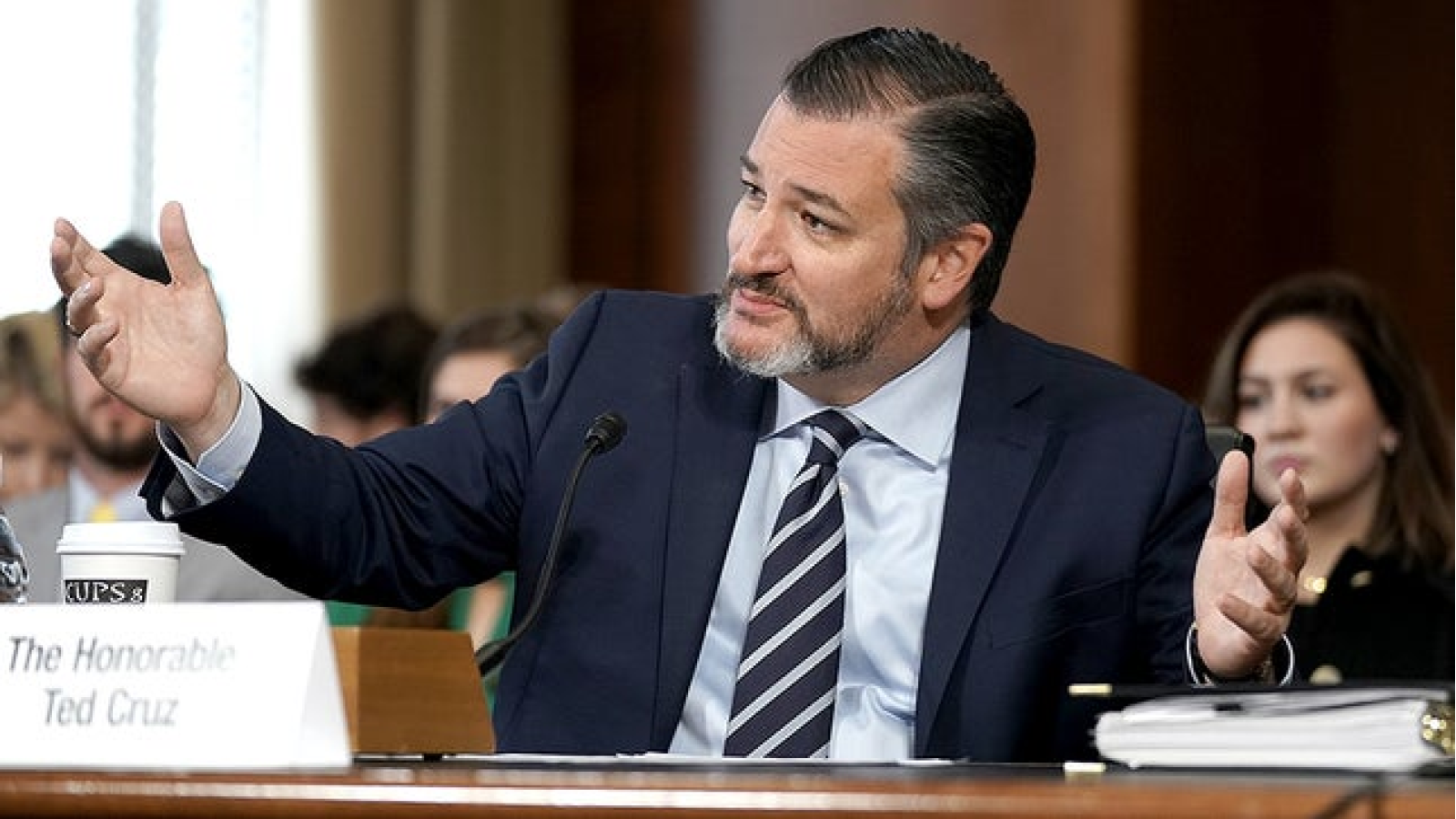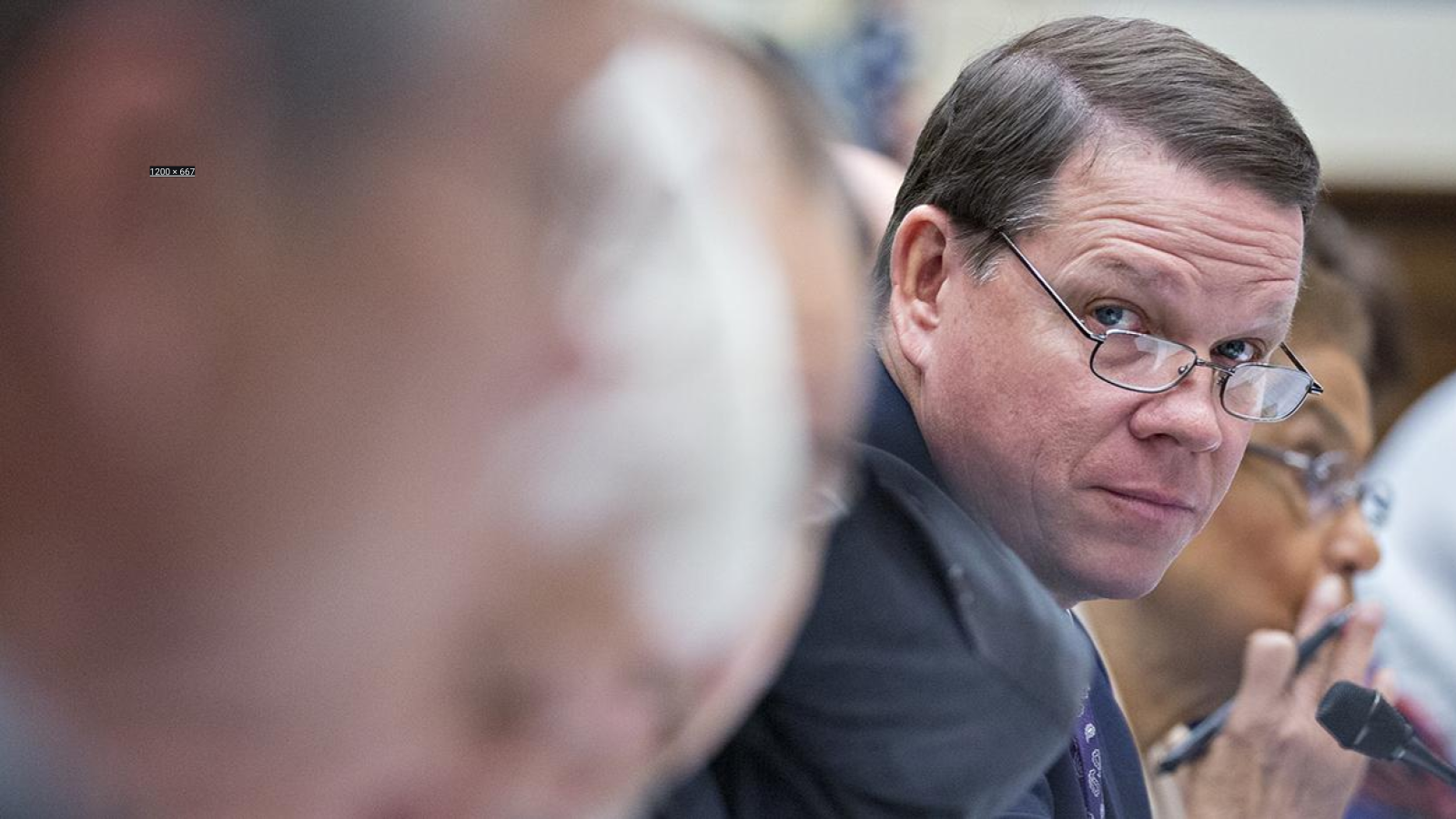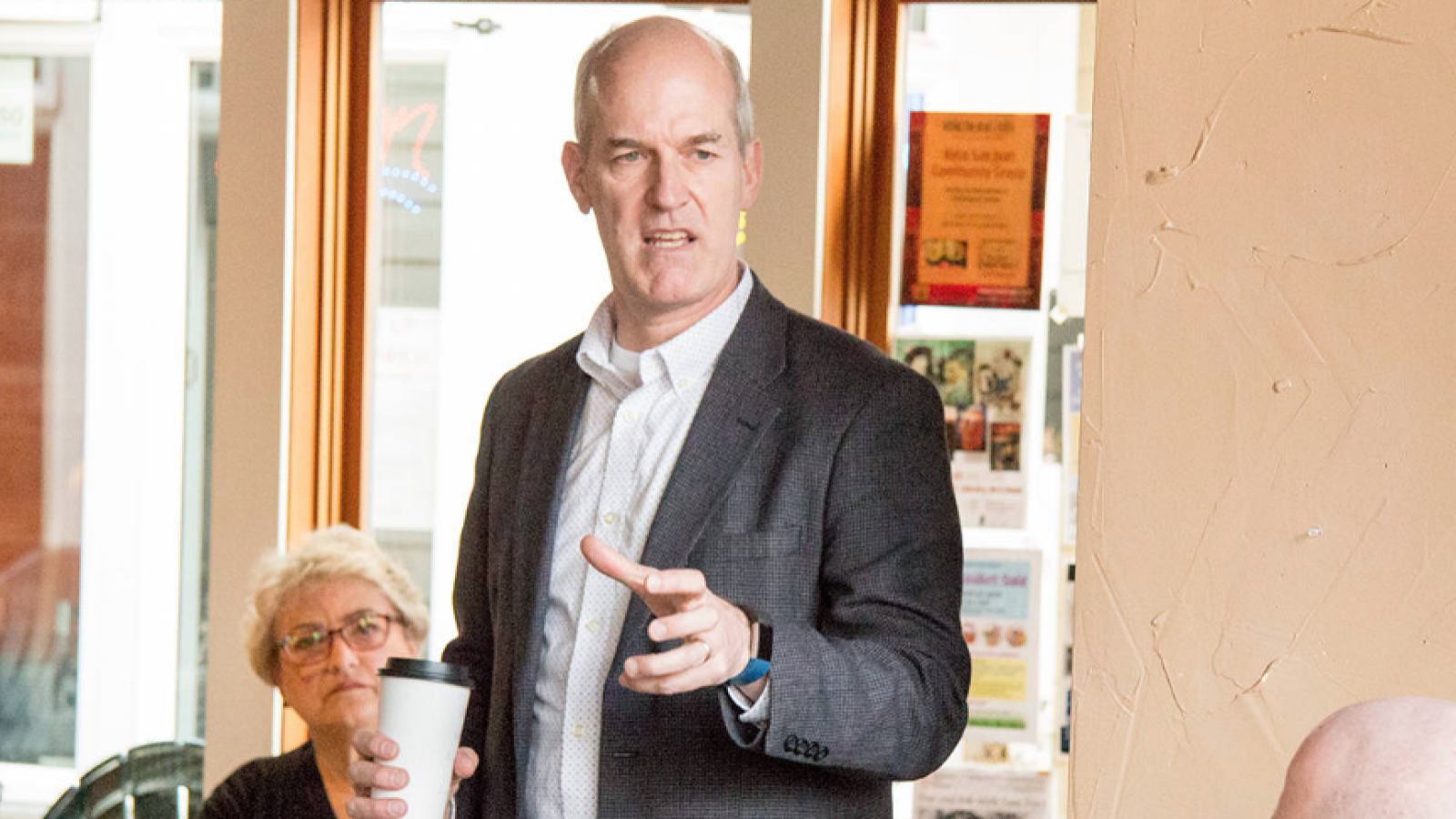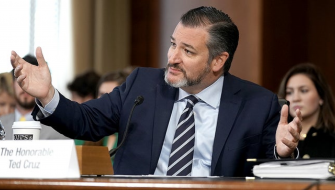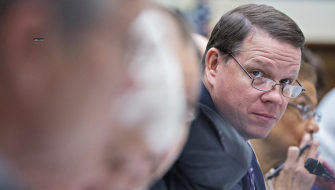Summary
Transportation in the United States is governed by laws and regulations of the federal government. The Department of Transportation is responsible for carrying out federal transportation policy, and the Department of Homeland Security is responsible for security in transportation.
- In the ‘About’ section of this post is an overview of the issues or challenges, potential solutions, and web links. Other sections have information on relevant legislation, committees, agencies, programs in addition to information on the judiciary, nonpartisan & partisan organizations, and a wikipedia entry.
- To participate in ongoing forums, ask the post’s curators questions, and make suggestions, scroll to the ‘Discuss’ section at the bottom of each post or select the “comment” icon.
The Transportation category has related posts on government agencies and departments and committees and their Chairs.
06/08/2021 (06:37)
Congress’ nonpartisan scorekeeper says the bipartisan infrastructure bill would add $256 billion to the federal deficit over the next decade. This comes as senators work to pass the plan in their chamber. Lisa Desjardins takes a detailed look at the bill, and speaks with Tom Smith of the American Society of Civil Engineers to learn more.
OnAir Post: Transportation
News
Latest
PBS NewsHour – April 2, 2024 (33:00)
Spotlight
PBS NewsHour – April 2, 2024 (33:00)
Videos
PBS NewsHour – April 2, 2024 (33:00)
About
Overview
Check the Infrastructure post for the party positions, committees, government agencies related to Transportation issues.
Challenges
Infrastructure Deterioration and Deficiencies:
- Aging and deteriorating roads, bridges, and railways
- Insufficient investment in maintenance and repair
- Congestion and reduced mobility
- Environmental degradation
Funding and Revenue Challenges:
- Limited funding sources for infrastructure projects
- Declining revenues from traditional sources (e.g., gas tax)
- Increasing costs of construction and maintenance
- Political and fiscal constraints
Congestion and Mobility Issues:
- Growing population and urban sprawl
- Increased traffic volume and congestion
- Inadequate public transportation systems
- Limited intermodal connectivity
Environmental and Climate Change Impacts:
- Transportation sector’s significant contribution to greenhouse gas emissions
- Climate change-related infrastructure vulnerabilities (e.g., flooding, extreme heat)
- Need for sustainable and environmentally friendly transportation solutions
Technological Disruptions and Innovations:
- Rapid advancements in autonomous vehicles, electrification, and ride-sharing
- Shifts in transportation patterns and consumer preferences
- Cybersecurity risks and data privacy concerns
- Ethical and regulatory challenges related to emerging technologies
Equity and Accessibility Concerns:
- Disparities in transportation access and affordability for underserved communities
- Limited mobility options for people with disabilities
- Social justice and environmental justice implications
Safety and Security Threats:
- Increasing number of traffic fatalities and injuries
- Infrastructure vulnerability to terrorist attacks and natural disasters
- Need for enhanced security measures and emergency preparedness
Economic Competitiveness:
- Inefficient and congested transportation infrastructure can hamper economic growth
- Need for reliable, efficient, and cost-effective transportation systems to support business and trade
- Globalization and competition require seamless and intermodal transportation networks
Other Challenges:
- Lack of coordination and collaboration among stakeholders
- Complex and fragmented regulatory framework
- Public perception and political resistance
- Workforce shortages and skills gaps
Solutions
Infrastructure Investment and Maintenance:
- Modernize and expand transportation infrastructure: Invest in new roads, bridges, tunnels, and rail lines to improve connectivity, reduce congestion, and enhance safety.
- Maintain existing infrastructure: Allocate funding for regular maintenance and repairs to prevent deterioration and extend the lifespan of transportation assets.
Technology and Innovation:
- Promote emerging technologies: Advance the use of autonomous vehicles, connected infrastructure, and data analytics to improve traffic flow, increase efficiency, and reduce emissions.
- Support research and development: Invest in cutting-edge technologies such as electric vehicles, smart cities, and artificial intelligence to drive innovation in transportation.
Sustainable Transportation:
- Reduce emissions: Promote clean energy vehicles, encourage public transportation, and invest in alternative transportation modes such as cycling and walking to mitigate environmental impact.
- Improve air quality: Implement emission control measures, promote fuel-efficient practices, and support the transition to zero-emission vehicles.
Accessibility and Equity:
- Enhance public transportation: Expand access to reliable and affordable public transportation options, particularly in underserved communities.
- Promote transportation equity: Ensure that all citizens have equal access to essential transportation services, regardless of income, disability, or location.
Urban Transportation Management:
- Implement integrated transportation planning: Coordinate transportation planning efforts among all levels of government and stakeholders to optimize mobility within metropolitan areas.
- Promote transit-oriented development: Encourage the development of communities and businesses near transportation hubs to reduce car dependence and improve connectivity.
Rural Transportation:
- Improve access to rural communities: Connect rural areas to major transportation networks and provide reliable transportation options for residents and businesses.
- Support rural economic development: Enhance transportation infrastructure and services to foster economic growth in rural regions.
Collaboration and Partnerships:
- Foster public-private partnerships: Leverage private sector expertise and investment to complement government efforts in transportation infrastructure and innovation.
- Promote interagency coordination: Ensure that transportation agencies at all levels collaborate effectively to achieve common goals and avoid duplication of efforts.
Funding and Financing:
- Establish sustainable funding mechanisms: Identify reliable and long-term sources of funding for transportation infrastructure, maintenance, and technological advancements.
- Explore innovative financing options: Consider public-private partnerships, bonds, and user fees to supplement traditional funding sources.
Websites
Government Agencies
- U.S. Department of Transportation (DOT): https://www.transportation.gov/
- Federal Highway Administration (FHWA): https://www.fhwa.dot.gov/
- Federal Transit Administration (FTA): https://www.transit.dot.gov/
- National Highway Traffic Safety Administration (NHTSA): https://www.nhtsa.gov/
- Transportation Research Board (TRB): https://www.trb.org/
Industry Associations
- American Association of State Highway and Transportation Officials (AASHTO): https://www.transportation.org/
- American Public Transportation Association (APTA): https://www.apta.com/
- Association of American Railroads (AAR): https://www.aar.org/
- National Association of City Transportation Officials (NACTO): https://nacto.org/
Nonprofit Organizations
- Transportation for America: https://t4america.org/
- TransitCenter: https://transitcenter.org/
- Partnership for Sustainable Transportation: https://www.sustainabletransport.org/
Other Resources
- Infrastructure Investment and Jobs Act (IIJA): https://www.whitehouse.gov/briefing-room/statements-releases/2021/11/15/fact-sheet-the-bipartisan-infrastructure-deal/
- U.S. Transportation Infrastructure Report Card: https://infrastructurereportcard.org/
- National Surface Transportation Policy and Revenue Study Center (NSTRPSC): https://www.nstrpsc49usc5333.org/
Legislation
Laws
Source: Google Search + Gemini + onAir curation
Surface Transportation Acts
- Intermodal Surface Transportation Efficiency Act (ISTEA) (1991): Established a new focus on intermodalism, environmental protection, and congestion mitigation.
- Transportation Equity Act for the 21st Century (TEA-21) (1998): Increased funding for highways, transit, and safety programs.
- Safe, Accountable, Flexible, Efficient Transportation Equity Act: A Legacy for Users (SAFETEA-LU) (2005): Authorized long-term funding for surface transportation programs and promoted sustainability.
- Moving Ahead for Progress in the 21st Century Act (MAP-21) (2012): Expanded federal funding for transportation infrastructure and prioritized innovative technologies.
- Fixing America’s Surface Transportation (FAST) Act (2015): Provided funding for infrastructure maintenance and modernization, including investments in roads, bridges, and public transportation.
Aviation-Related Acts
- Federal Aviation Act (1958): Created the Federal Aviation Administration (FAA) and set federal standards for aviation safety and regulation.
- Airport and Airway Improvement Act (1982): Provided funding for airport development and modernization.
- Code of Federal Regulations (CFR) Title 14, Part 71: Establishes security standards for airports and airlines.
- FAA Reauthorization Act (2018): Extended funding for the FAA and included measures to improve airport security, modernize air traffic control, and promote drone integration.
Maritime-Related Acts
- Jones Act (1920): Requires all goods transported by water between U.S. ports to be carried on U.S.-built and U.S.-flagged vessels.
- Merchant Marine Act (1936): Established the Merchant Marine Commission and provided subsidies for shipbuilding and ship operation.
- Port and Waterways Safety Act (1972): Created the Coast Guard’s Port and Waterways Safety Division and established federal standards for port security.
- Maritime Transportation Security Act (2002): Enhanced maritime security measures following the 9/11 attacks.
Other Transportation-Related Acts
- National Highway Safety Act (1966): Set minimum safety standards for motor vehicles and established the National Highway Traffic Safety Administration (NHTSA).
- Transportation Security Act (2001): Created the Transportation Security Administration (TSA) and established new security measures for all modes of transportation.
- Passenger Rail Investment and Improvement Act (2008): Provided funding for Amtrak and other passenger rail projects.
- Infrastructure Investment and Jobs Act (2021): Invested billions of dollars in transportation infrastructure, including roads, bridges, public transportation, and broadband.
New Bills Introduced 2023-2024
Source: Google Search + Gemini + onAir curation
Infrastructure Investment and Jobs Act (IIJA)
- Invests $1.2 trillion in transportation infrastructure, including:
- $110 billion for roads and bridges
- $66 billion for passenger rail
- $39 billion for public transportation
- $25 billion for airports
Moving Forward Act
- Authorizes the Federal Highway Administration (FHWA) to make grants to states and local governments for transportation projects.
- Focuses on projects that improve safety, reduce congestion, and promote economic growth.
Surface Transportation Reauthorization and Reform Act (STRRA)
- Reauthorizes the federal surface transportation program through fiscal year 2023.
- Provides funding for roads, bridges, transit, and other transportation infrastructure.
- Includes provisions to improve safety, promote innovation, and reduce greenhouse gas emissions.
FAST Act
- Reauthorizes the federal surface transportation program through fiscal year 2021.
- Provides funding for roads, bridges, transit, and other transportation infrastructure.
- Focuses on improving the safety and efficiency of the nation’s transportation system.
Other Key Bills
- Electric Vehicle Charging Infrastructure Act: Provides funding for the installation and maintenance of electric vehicle charging stations.
- Autonomous Vehicle Safety Act: Establishes safety standards for autonomous vehicles and provides funding for research and development.
- Avian Infrastructure Protection Act: Provides funding for the prevention and mitigation of bird strikes at airports.
- Transportation Security Act: Enhances the security of the nation’s transportation system against terrorism and other threats.
- Federal Motor Carrier Safety Administrative Assessment Act: Strengthens the enforcement of federal motor carrier safety regulations.
Committees, Agencies, & Programs
Committees
Source: Google Search + Gemini + onAir curation
House of Representatives
- Committee on Transportation and Infrastructure
- Jurisdiction over all aspects of transportation, including:
- Highways, bridges, transit, rail, aviation, and maritime
- Infrastructure investment and funding
- Safety, security, and sustainability
- Jurisdiction over all aspects of transportation, including:
- Committee on Ways and Means
- Jurisdiction over tax policy and revenue, which affects funding for transportation projects
- Committee on Energy and Commerce
- Jurisdiction over energy policy, which affects the environmental impact of transportation
- Committee on Science, Space, and Technology
- Jurisdiction over research and development related to transportation technologies
Senate
- Committee on Environment and Public Works
- Jurisdiction over:
- Highways, bridges, transit, and rail
- Environmental protection related to transportation
- Jurisdiction over:
- Committee on Finance
- Jurisdiction over tax policy and revenue
- Committee on Commerce, Science, and Transportation
- Jurisdiction over:
- Aviation and maritime transportation
- Safety, security, and sustainability of transportation systems
- Jurisdiction over:
Joint Committees
- Joint Economic Committee
- Conducts studies and makes recommendations on economic policy, including infrastructure investment
Subcommittees
Within these committees, there are subcommittees that focus on specific aspects of transportation, such as:
- House Transportation and Infrastructure Subcommittee on Highways and Transit
- Senate Environment and Public Works Subcommittee on Transportation and Infrastructure
- House Energy and Commerce Subcommittee on Environment and Climate Change
Government Agencies
Source: Google Search + Gemini + onAir curation
Department of Transportation (DOT)
- Lead agency for US transportation policy and oversight
- Regulates and promotes all modes of transportation: air, rail, maritime, and highway
Federal Highway Administration (FHWA)
- Manages the National Highway System and provides funding for road construction and maintenance
- Develops and enforces safety and environmental regulations for highways
Federal Aviation Administration (FAA)
- Regulates civil aviation and aerospace safety
- Manages the National Airspace System and provides air traffic control services
Federal Railroad Administration (FRA)
- Regulates railroad safety and operations
- Provides funding and oversight for Amtrak and other passenger rail services
Maritime Administration (MARAD)
- Promotes and regulates the US maritime industry
- Provides funding and support for shipyards, shipping companies, and ports
Federal Transit Administration (FTA)
- Provides funding and technical assistance for public transportation systems
- Develops and enforces safety and environmental regulations for buses, trains, and other transit vehicles
National Highway Traffic Safety Administration (NHTSA)
- Sets and enforces safety standards for motor vehicles
- Conducts research on traffic safety and develops safety programs
Surface Transportation Board (STB)
- Regulates the economic and service aspects of rail and motor carrier transportation
- Resolves disputes between shippers and carriers
National Transportation Safety Board (NTSB)
- Investigates major transportation accidents and makes recommendations to prevent future occurrences
Environmental Protection Agency (EPA)
- Regulates air and water pollution from transportation sources
- Develops and enforces emissions standards for vehicles and engines
Programs & Initiatives
Source: Google Search + Gemini + onAir curation
Infrastructure Investment and Jobs Act (IIJA)
- Provides $550 billion in federal funding over five years for transportation projects, including roads, bridges, public transit, and electric vehicle infrastructure.
- Aims to reduce traffic congestion, improve safety, and promote economic recovery.
2. Bipartisan Infrastructure Law (BIL)
- Specifically allocates funding for transportation projects within the IIJA, including:
- $110 billion for roads and bridges
- $66 billion for public transit
- $7.5 billion for electric vehicle charging stations
3. Safe Streets and Roads for All (SS4A)
- A national initiative to improve road safety for all users, including pedestrians, cyclists, and motorists.
- Provides funding and technical assistance to local governments and community organizations to implement safety measures.
4. National Highway Traffic Safety Administration (NHTSA)
- Federal agency responsible for setting vehicle safety standards and conducting research on transportation safety issues.
- Oversees programs such as:
- 5-Star Safety Ratings
- Vehicle Recalls
- Drunk Driving Enforcement
5. Federal Transit Administration (FTA)
- Federal agency that provides funding and technical assistance for public transit projects.
- Supports programs such as:
- Capital Investment Grants
- Buses and Bus Facilities Grants
- Low or No Emission Vehicle Purchase Grants
6. Federal Highway Administration (FHWA)
- Federal agency that administers the Highway Trust Fund and provides funding for road and bridge projects.
- Provides technical guidance and research on highway engineering and safety.
7. Intelligent Transportation Systems (ITS)
- A joint initiative between government, industry, and academia to develop and deploy advanced technologies to improve transportation safety, efficiency, and sustainability.
- Includes technologies such as connected vehicles, smart traffic management systems, and automated driving.
8. National Freight System
- A network of highways, railways, ports, and airports that facilitate the movement of goods across the country.
- The government provides funding and support for freight infrastructure projects and initiatives.
9. Advanced Air Mobility (AAM)
- An emerging sector that aims to develop and deploy new technologies for urban air transportation.
- The government is supporting research and development efforts in AAM through programs like the Urban Air Mobility Grand Challenge.
10. National Economic Council (NEC)
- White House advisory body that coordinates economic policy across federal agencies.
- Plays a role in developing and implementing transportation policies that support economic growth and recovery.
More Information
Judiciary
Source: Bard AI + onAir curation
The U.S. judiciary plays a pivotal role in shaping transportation policy and practices through its interpretation of laws, regulations, and constitutional provisions. This relationship is multifaceted and often involves complex legal challenges.
Key areas of intersection between transportation and the judiciary include:
- Regulatory Interpretation:
- Agency Rulemaking: The judiciary reviews agency regulations to ensure they align with statutory authority and comply with due process requirements.
- Administrative Law: Courts often adjudicate disputes between transportation agencies and regulated entities, interpreting rules and regulations.
- Environmental Law:
- NEPA: The National Environmental Policy Act (NEPA) requires federal agencies to assess the environmental impacts of transportation projects. Courts review NEPA compliance and may require agencies to conduct more detailed studies.
- Clean Air Act: The judiciary has played a significant role in interpreting and enforcing the Clean Air Act, which has implications for transportation emissions.
- Consumer Protection:
- Airline Passenger Rights: Courts have addressed issues related to airline passenger rights, such as baggage fees, flight delays, and refunds.
- Transportation Safety: The judiciary has been involved in cases related to transportation safety, including accidents and regulatory compliance.
- Property Rights and Eminent Domain:
- Takings Clause: The Fifth Amendment’s Takings Clause protects property owners from government seizure without just compensation. Courts often adjudicate disputes involving the government’s use of eminent domain for transportation projects.
- Discrimination and Civil Rights:
- Transportation Accessibility: The judiciary has addressed issues related to transportation accessibility for individuals with disabilities, ensuring compliance with the Americans with Disabilities Act (ADA).
Notable Cases:
- Massachusetts v. EPA (2007): The Supreme Court held that the EPA had a duty to regulate greenhouse gas emissions from vehicles under the Clean Air Act.
- Northwest Airlines v. Transport Workers Union of America (2004): The Supreme Court upheld the Railway Labor Act’s preemption of state laws that regulate the airline industry.
- United States v. Texas (2015): The Supreme Court upheld the federal government’s authority to implement immigration enforcement policies, including the Deferred Action for Childhood Arrivals (DACA) program, which had transportation implications.
Nonpartisan Organizations
Source: Google Search + Gemini + onAir curation
- American Association of State Highway and Transportation Officials (AASHTO): AASHTO is a nonpartisan, nonprofit association representing state departments of transportation and public transportation operating agencies. Its mission is to advance transportation policy, practice, and innovation through leadership, research, and collaboration.
- National Association of City Transportation Officials (NACTO): NACTO is a nonpartisan, nonprofit association representing large cities across the United States. Its mission is to promote sustainable transportation policies and practices that improve livability, equity, and economic vitality in cities.
- Transportation Research Board (TRB): TRB is a unit of the National Academies of Sciences, Engineering, and Medicine. It conducts research and provides guidance on transportation policy, planning, and operations. TRB is nonpartisan and its mission is to provide independent, objective, and scientifically based information to assist decision makers in addressing transportation challenges.
- National Surface Transportation Policy and Revenue Study Commission (NPTS): NPTS is a federally chartered commission that provides independent recommendations on long-term surface transportation policy and revenue strategies. NPTS is nonpartisan and its mission is to provide Congress with a roadmap for the future of surface transportation in the United States.
- American Public Transportation Association (APTA): APTA is a nonpartisan, nonprofit association representing public transportation providers across the United States. Its mission is to advocate for the interests of public transportation and to promote the development and operation of safe, efficient, and affordable public transportation systems.
Partisan Organizations
Source: Google Search + Gemini + onAir curation
Democratic-Leaning Organizations:
- American Public Transportation Association (APTA): Advocates for federal investment in public transportation, including funding for infrastructure, operations, and safety.
- Environmental Defense Fund (EDF): Promotes clean energy and sustainable transportation solutions, including reducing vehicle emissions and investing in electric vehicles.
- League of American Bicyclists (LAB): Advocates for bicycle-friendly policies and infrastructure, as well as increased funding for biking.
- National Association of City Transportation Officials (NACTO): Represents cities and advocates for policies that prioritize walking, biking, and transit.
- Rail Passengers Association (RPA): Advocates for improved passenger rail service, including increased funding and expansion of routes.
Republican-Leaning Organizations:
- American Trucking Associations (ATA): Represents the trucking industry and advocates for policies that support truck drivers and reduce regulatory burdens.
- National Automobile Dealers Association (NADA): Represents car dealers and advocates for policies that protect the interests of the automotive industry.
- Road & Transportation Builders Association (RTBA): Represents contractors and construction firms in the transportation sector, advocating for increased infrastructure spending.
- U.S. Chamber of Commerce: Supports policies that promote economic growth and competitiveness, including investments in transportation infrastructure.
- American Road & Transportation Builders Association (ARTBA): Promotes infrastructure construction and maintenance, advocating for increased funding and tax incentives for road and bridge projects.
“Transportation policy of the US” (Wiki)
- What links here
- Related changes
- Upload file
- Permanent link
- Page information
- Cite this page
- Get shortened URL
- Download QR code
- Download as PDF
- Printable version
- Wikidata item
Transportation in the United States is governed by laws and regulations of the federal government. The Department of Transportation is responsible for carrying out federal transportation policy, and the Department of Homeland Security is responsible for security in transportation.

The Commerce Clause of the United States Constitution grants Congress the power to regulate interstate commerce, and this power was upheld by the Supreme Court in Gibbons v. Ogden.[1] Transportation regulations are created by agencies within the Department of Transportation, and the department is responsible for carrying out federal transportation policy. The mission statement of the Department of Transportation is “to deliver the world’s leading transportation system, serving the American people and economy through the safe, efficient, sustainable, and equitable movement of people and goods.”[2] Congress is also authorized to establish post roads as part of the Postal Clause. Federal transportation policy is codified under Title 49 of the United States Code and Title 49 of the Code of Federal Regulations.
The need for federal transportation policy arose as the United States spread westward in the 19th century. The National Road was funded by the federal government in 1806 to connect the East Coast and the Midwest. The General Survey Act of 1824 authorized surveys to plan transportation routes that were considered to be of national importance. The Department of Transportation was established in 1967. The Hazardous Materials Transportation Act of 1975 tasked the Department of Transportation with regulating the transport of hazardous materials. Transportation policy was heavily deregulated in the 1970s and 1980s. Transportation planning was reformed by the Intermodal Surface Transportation Efficiency Act of 1991.
The September 11 attacks and the 2001 anthrax attacks prompted significant changes to transportation security policy in the 2000s. The Aviation and Transportation Security Act created the Transportation Security Administration (TSA), which took over responsibilities for airport security from private companies. The Department of Homeland Security was created by the Homeland Security Act of 2002, and this department took control of the TSA, the U.S. Customs and Border Protection, and the United States Coast Guard, among other agencies.[3]
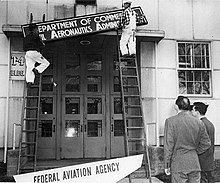
Air transportation in the United States is overseen by the Federal Aviation Administration, which is responsible for airports, air traffic control, and aviation safety regulations. Regulations vary depending on the type of aircraft, with aircraft of different sizes and purposes subject to different regulations.[4] Other relevant organizations to aviation policy include the Transportation Security Administration, which is responsible for security in airports, and NASA, which is responsible for aviation research. Airports in the United States are typically publicly owned with operations contracted to private companies, though airports may be privatized under the Airport Investment Partnership Program of 1997. Foreign air carriers are required to comply with the International Civil Aviation Organization and to establish an aviation security agreement with the United States before operating in American airspace.[4]
The first federal aviation agency was created in 1915, when the National Advisory Committee for Aeronautics (NACA) was established to conduct aeronautical research.[5] The Air Commerce Act of 1926 established the Aeronautic Branch within the Department of Commerce to regulate aviation, and the branch was reformed into the Bureau of Air Commerce in 1934. In 1938, the Civil Aeronautics Act replaced the Bureau of Air Commerce with the Civil Aeronautics Authority, granting the new agency regulatory powers over airline fares and routes. Two years later, the Civil Aeronautics Authority was split into the Civil Aeronautics Administration, which regulated air traffic control, and the Civil Aeronautics Board, which regulated aviation safety. The Federal Aviation Act of 1958 replaced the Civil Aeronautics Authority with the Federal Aviation Agency, which would later be named the Federal Aviation Administration. NACA was also replaced at this time, with NASA being established to expand aeronautic research to cover space travel research.[5] The National Transportation Safety Board was established in 1967 to take over the accident investigation powers of the Civil Aeronautics Board. The Airline Deregulation Act of 1978 relinquished federal control over airline fares and routes and abolished the Civil Aeronautics Board.

Water transport in the United States is overseen by the Maritime Administration, the Great Lakes St. Lawrence Seaway Development Corporation, and the Federal Maritime Commission. The United States Merchant Marine is a fleet of civilian and federal owned ships that transports goods in American waters and serves as an auxiliary to the Navy. Federal courts have jurisdiction over maritime law.
The United States Shipping Board was created in 1916. The Merchant Marine Act of 1920 regulates maritime commerce and restricts cabotage. The Shipping Board was abolished in 1934 and replaced by the United States Maritime Commission in 1936. The Maritime Commission was replaced by the Maritime Administration in 1950.

Rail transportation in the United States is overseen by the Federal Railroad Administration. Amtrak is a government-owned corporation responsible for intercity rail.
Several Pacific Railroad Acts were passed in the 1860s to encourage the development of a transcontinental railroad, and the first transcontinental railroad was constructed to connect the eastern railroad networks to the West Coast in 1869.[6] Throughout the 19th century, railroads were privately owned, resulting in natural monopolies and price fixing, particularly among shorter routes. Congress responded by passing the Interstate Commerce Act of 1887, the first law to create a federal regulatory body for a specific industry. The Interstate Commerce Act applied several regulations to railroad prices and established the Interstate Commerce Commission (ICC).[7] The powers of the ICC were expanded by laws such as the Elkins Act of 1903, the Hepburn Act of 1906, the Mann–Elkins Act of 1910, and the Valuation Act of 1913. The Railroad Safety Appliance Act of 1893 was passed as an early regulation of rail safety.
Congress funded high-speed rail with the High-Speed Ground Transportation Act of 1965. The 4R Act of 1976 and the Staggers Rail Act of 1980 deregulated railroads as part of an overhaul of American transportation policy. The ICC was replaced with the Surface Transportation Board in 1995.

Driving in the United States is overseen by the Federal Highway Administration. The federal government is responsible for the interstate highways, while most other roads are maintained by local and state governments. Road safety is a major concern in American transportation policy. About 95% of transportation-related deaths occur on streets, roads, and highways.[8] Road safety policy is overseen by the Federal Motor Carrier Safety Administration and the National Highway Traffic Safety Administration. The United States is also a party to the Geneva Convention on Road Traffic.
In 1905, the Office of Public Roads was established by merging the Division of Tests and the Office of Public Road Inquiries. 10% of the excess funds produced by the Forest Service were appropriated for the production of federal roads serving national forests. Its name was changed to the Bureau of Public Roads in 1919.[9] The Federal Aid Road Act of 1916 was the first law to fund federal highways, and several Federal-Aid Highway Acts were passed through the 20th century to build on this law.[10][11] The Federal-Aid Highway Act of 1944 authorized the construction of interstate highways, and the federal government set standards with input from state administrations. Upon entering the Korean War military readiness became a concern and the Federal-Aid Highway Act of 1952 increased funding for the highways to this end. President Eisenhower was a strong advocate for a national highway system, and his administration successfully pushed for further expansion in the Federal-Aid Highway Acts of 1954 and 1956.[11] The National Maximum Speed Law was enacted in 1974 and would not be repealed until 1995. The Motor Carrier Act of 1980 deregulated trucking.
The Highway Beautification Act establishes regulations for the environments surrounding federal highways.[12] Interstate Highway standards are regulated by the American Association of State Highway and Transportation Officials. Road signs are standardized by the Federal Highway Administration in the Manual on Uniform Traffic Control Devices. The Highway Trust Fund is used to finance federal road maintenance. Odometer fraud is a federal crime under the Federal Odometer Act.[13]
- Public transportation in the United States
- Transportation safety in the United States
- Timeline of United States railway history
- Space policy of the United States
- ^ “Gibbons v. Ogden, 22 U.S. 1 (1824)”. Justia Law. Retrieved 2022-05-11.
- ^ “About DOT”. U.S. Department of Transportation. March 28, 2022.
- ^ “Legislative Updates – Homeland Security Act of 2002”. Office of Legislative Policy And Analysis. Archived from the original on May 27, 2010.
- ^ a b Westwood Wilson, Diane; Bowles, Paul N.; Cunningham, Jean M. (2022). “USA”. Aviation Law Report 2022. ICLG.
- ^ a b Suckow, Elizabeth (April 23, 2009). “NACA Overview”. NASA.
- ^ “Transportation before 1876”. National Museum of American History. 2017-02-28.
- ^ “Interstate Commerce Act (1887)”. National Archives. 2021-09-08.
- ^ Strategic Plan FY 2022-2026 (PDF) (Report). U.S. Department of Transportation. 2022. pp. 7–12.
- ^ “History | FHWA”. U.S. Department of Transportation. February 25, 2022.
- ^ Weingroff, Richard F. (1996). “Federal Aid Road Act of 1916: Building The Foundation”. Public Roads. 60. Federal Highway Administration.
- ^ a b Weingroff, Richard F. (1996). “Federal-Aid Highway Act of 1956: Creating The Interstate System”. Public Roads. Federal Highway Administration.
- ^ Pub. L. 89–285: Highway Beautification Act
- ^ Pub. L. 103–272: Federal Odometer Act
| |||||||||||||||||||||||||||||||||||
References
See also
Road policy
Rail policy
Maritime policy
Aviation policy
Policy development
Contents








